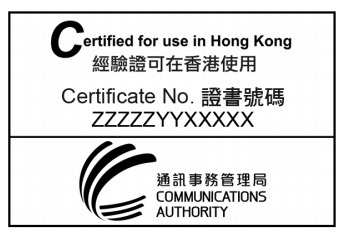Greater China
Home > Our Markets > Certification > Product Certification > Electrical and Electronic Product Certification > Greater China

BSMI, full name of Bureau of Standards, Metrology and Inspection. According to the announcement of the BSMI, from July 1, 2005, products sold in Chinese Taiwan shall be subject to the supervision of electromagnetic compatibility and safety regulations, which is a mandatory certification.
Input voltage and standard plug: 110 V, 60 Hz
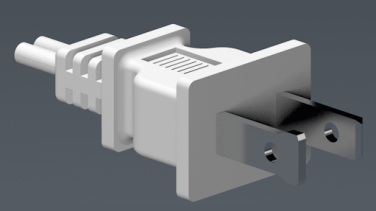
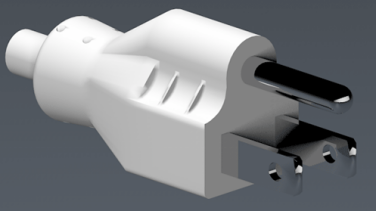
Effective date: Since July 1, 2005
Certification mode: Product testing +Registration regulation
Issuing organization: BSMI
Testing organization: Labs in Chinese Taiwan, accredited by TAF.
Product scopes:CI MARK contains electrical products (such as household appliances), electronic products (such as IT & AV products), mechanical products (such as power tools and equipment), chemical products (such as tires and toys).
Voluntary CNS MARK contains industrial products, building materials, electric wires, household appliances, automobile parts, industrial raw materials or competitor's products which have the mark.
Voluntary VPC MARK contains important safety components, top box, lamp holder, battery charger, restricted hazardous substances, lithium battery, vehicle electromagnetic compatibility, sports and fitness equipment, etc.
Certification procedure: Certification application -->Acceptance of application-->Product testing -->Data review -->Issuing certificate.
Completion of certification: Obtaining the product BSMI certificate means the completion of certification.
Validity of certificate: 3 years.
Certification mode (verification mode): type approval, certification registration, declaration of conformity.
I. Type approval is divided into two types:
Type approval (EMC + Safety): Since January 1, 2004, it is necessary for 178 electrical and electronic products to apply such approval. Applicable standards: EMC + Safety, the following documents should be provided (Product Type Approval Application Form, company or factory license, test reports, technical documents for electromagnetic compatibility: photos, labels, parts with electromagnetic interference, block diagram and user manual, and technical documents for safety). Validity of the certificate: three years; it can be extended once.
EMC Type approval (to replace the original EMC application) is reinforced from November 1, 2002. Applicable products: 61 electrical and electronic products only need to meet the requirements of EMI; 124 electrical and electronic products only require EMI+ safety report (if the product safety requirements are required). Applicable standard: EMI only. The following documents should be provided (Application Form of EMC Type Approval, test reports, technical documents, photos, labels, parts with EMC, block diagram and user manual).
II. Certification registration:
For "Electrostatic converters for automatic data processors and its auxiliary units and communication appliances" and "other switched power supply", the inspection mode is changed from declaration of conformity to commodity verification registration.
III. Declaration of compliance:
Products implementing the inspection of declaration of conformity in 17 categories, including mini data equipment with calculation function, replay and display equipment, electronic calculators (operating not by use of external power), electronic calculators with a list of devices, other electronic calculators, other calculators, hard disk drives, floppy disk drives, CD-ROMs, other disk drives, other storage units, other automatic data processors, and parts and accessories of other machines specified in Article 8471.10 (limited to the inspection of Category B computer motherboard and various built-in plug-in cards of Category B computer with I/O interface).
Eight categories of products, including word processor, automatic typewriter, electric typewriter, other electric typewriter, blind braille typewriter (with a weight less than 12 kg), blind braille typewriter (with a weight more than 12 kg), non-electric typewriter (with a weight less than 12kg) and other non-electric typewriter, subject to the declaration of compliance (DoC) inspection.
Seven categories of products, such as electronic calculators (excluding these operating by use of external power supply), built-in magnetic (optical) disk drives, computer motherboards and built-in plug-in cards, are not included in the safety inspection scope.
Certification Type:New application, change application, model change or product change.
Notes for BSMI Certification of Power Adapter
Model: It must be a specific model; a discrepancy statement must be provided for multiple models.
Product serial number: C.C.C Code product serial number; it should be filled in the Customs Declaration when the product enters the customs and confirmed by the customer.
Plastic combination: If the glue is used, the corresponding brand and model should be provided.
List of key materials: BSMI requires VDE or TUV certificates of key materials such as FUSE and Y capacitor.It should contain the full reports. Web download link or Cert. No. is not enough.
BSMI LOGO
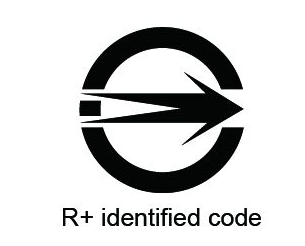
User Manual
Language: User manual in traditional Chinese.
Contents: Include operating ambient temperature, safety instructions, port diagrams or photos of the product
China Compulsory Certification system is abbreviated as CCC. It refers to a product conformity assessment system implemented by the Chinese Government in accordance with laws and regulations in order to protect consumers' personal safety and national safety, and strengthen product quality control. To protect national security, prevent fraud, protect human health or safety, animal or plant life or health and protect environment, the related products stipulated by the state must be certified (hereinafter referred to as the product compulsory certification), and identified with the certification mark before leaving the factory, sales, import or use in other business activities.
Implementation date: The General Administration of Quality Supervision, Inspection and Quarantine of the People's Republic of China (AQSIQ) and the Certification and Accreditation Administration of China jointly promulgated the Provisions on the Administration of Compulsory Product Certification on December 3, 2001 and the Provisions came into full force from August 1, 2002 and were enforced from May 1, 2003.
Competent unit: AQSIQ.
Supervision organization: General Administration of Quality Supervision, Inspection and Quarantine of the People's Republic of China (AQSIQ for short) shall be in charge of national product compulsory certification. The Certification and Accreditation Administration of China (CNCA for short) shall be responsible for the organization, implementation, supervision, administration and comprehensive coordination of compulsory product certification nationwide. The local quality and technical supervision departments at all levels and the local Entry-Exit Inspection and Quarantine Bureau (CIQ for short) shall, be responsible for the supervision, administration, law enforcement and investigation of the compulsory product certification activities within their respective jurisdictions according to their respective functions and duties.
Implementation bodies: certification authority, testing organization, inspection authority.
Certifying authority (certification):CNCA specifies the certification authority name with the details by reference to the content ,CNCA shall update the certified product catalog and range according to the ability of the certifying authority. The issuing authority which currently cooperates with Balun is China Quality Certification Center (CQC for short).
Basic certification procedures: certification application and acceptance; sample test; initial factory inspection; evaluation and approval of certification results; supervision after certification.
Testing organization: All laboratories authorized by CNCA and signed with license-issuing organizations. By January 2017, CNCA had authorized 195 laboratories in all.
Product Scope: 158 products in 20 categories: CNCA issues the No. 45 Announcement in 2014- Announcement of CNCA on Issuing Catalogue Description and Definition Form of Compulsory Product Certification
Authentication Modes: According to the provisions of Implementation Rules for Compulsory Product Certification-Telecommunication Terminal Equipment issued by CNCA, the basic certification mode for the compulsory product certification for audio and video equipment is: type test +certified supervision. According to the provisions of Implementation Rules for Compulsory Product Certification- Manufacturer Classification Management, Certification Mode Selection and Validation, the certification body shall carry out the classified management of manufacturers and add the inspection of enterprise quality assurance ability and the products consistency (initial factory inspection) and other related elements as well as certified supervision in accordance with the classification management results to determine the certification mode which is applicable to the authentication client. According to the Implementation Rules of CQC, audio and video equipment can be certified with the following certification modes:
Mode 1 (Categories A and B): Type test +certified supervision
Certified supervision: one of the three methods: follow-up inspection, sampling test or inspection at the production site, sampling test or inspection at the market.
Mode 2 (Categories C and D):Type test +certified supervision
Certified supervision: one of the three methods or its combination: follow-up inspection, sampling test or inspection at the production site, sampling test or inspection at the market.
Mode 3 (Categories A, B, C and D): Type test + initial factory inspection +certified supervision
Certified supervision: Refers to one of the three methods or its combination: follow-up inspection, sampling test or inspection at the production site, sampling test or inspection at the market. In order to avoid the risk of non-conformity of products on the market, manufacturers of Categories A, B, C and D can also voluntarily choose Mode 3 for certification.
Classification of manufacturing enterprises: CQC divides manufacturing enterprises into four categories, which are represented by Categories A, B, C and D, respectively.
Certification workflow: Certification application -->Acceptance of application-->Type test -->Factory inspection -->Issuing certificate-->Tracking and inspection -->Suspension or revocation.
Completion of certification: Obtain the CCC certificate of product complete the factory inspection and obtaining CCC mark.
Validity of certificate: 5 years (renewable)
Certification Type:
New application
Change application
When applying for the change of products, if the parts or circuits of the products are changed, it is necessary to confirm whether the parts to be changed are Catetory A or Catetory B parts for related parts for safety certification. If the parts belong to Catetory B parts, there is no need to apply for the change, and the customer can contact the sub-center for report. If the parts to be changed belong to Catetory A parts, in principle, random assessment shall be conducted on Catetory A parts according to the standard requirements. In case of any change in the parameters controlled by electromagnetic compatibility, supplementary tests shall be conducted according to the requirements in the attachment.
Derivative application (using the certified model).
According to the latest requirements of CNCA on July 27, 2017, the change of any legal subject among the applicant, manufacturer and manufacturer cannot follow the change application, and the normal derivative application, namely the new application shall be implemented.
The derivative application is not applicable to the invalid initial certificate (suspended, canceled, withdrawn), the new application for the whole project shall be executed. Certificate status query
Certificate renewal (change application).
For the products with the CCC certificate is about to expire, the applicant may apply for the extension of the CCC certificate within 90 days upon the expiration of the CCC certificate.
China implements a network access licensing system for telecommunications terminal equipment, radio communication equipment and telecommunications equipment connected to public telecommunications networks and those involved in interconnection between networks. Telecommunications equipment subject to network access licensing system must obtain a network access license issued by the Ministry of Industry and Information Technology (MIIT).
The equipment failing to obtain a network access license shall not be allowed to access the public telecommunications network for use or for sale in China. The network access license certificate contains certificate number, applicant, manufacturer, equipment name, equipment model, place of origin, remarks, issuing date and validity of the certificate. The network access license is generally valid for 3 years.
For names of telecommunications equipment subject to network access licensing system, please visit the telecommunications equipment access management website (Jwxk.miit.gov.cn) by the paths of "Network Access Guide" -- "Equipment Directory" -- "Equipment Name of Telecommunications Equipment Directory".
Visit the website jwxk.miit.gov.cn and follow the procedure to confirm if the equipment is listed in the Telecommunications Equipment Directory.
Application Flow of Network Access License
Slide left and right to see more

NCC, namely The National Communications Commission in Chinese Taiwan, mainly controls the communication and information equipment sold in and used in the Chinese Taiwan market. NCC stipulates that all telecommunications terminal equipment, low-power RF products and restricted telecommunications RF devices should be subject to the type approval before they can be marketed.
Product Scope:
a. Low-power RF products with operating frequencies from 9kHz to 300GHz. Such as wireless network (WLAN) products (including IEEE802.11a/ b /g), UNII, Bluetooth products, RFID, ZigBee, wireless keyboard, wireless mouse, wireless headset microphone, radio walkie-talkie, radio remote control toys, all kinds of radio remote controls, various wireless alarms, etc.
b. Public switched telephone network (PSTN) products. Such as wired telephone (including VOIP network telephone), automatic alarm equipment, telephone answering machine, fax, remote control device, wired telephone wireless host/slave machine, keypad telephone system, data equipment (including ADSL equipment), incoming call display terminal equipment, 2.4GHz radio frequency telecommunication terminal equipment, etc.
c. Public Land Mobile Network (PLMN) products. Such as wireless broadband access mobile platform equipment (WiMAX mobile terminal equipment, 4GLTE), third generation mobile communication terminal equipment (3G mobile phone), etc.
Certification Procedure: Certification application -->Acceptance of application-->Product testing -->Data review -->Issuing certificate.
Completion of Certification: Obtaining the NCC certificate of product means the completion of certification. Certificate query URL:https://nccmember.ncc.gov.tw/
Validity of Certificate: Permanently valid.
Proportion Description of NCC Certification Mark
a. The certification mark shall be pasted or incused on the the equipment body at appropriate proportion and should be clear enough without size requirement.
b. The NCC mark and the inspection qualification number shall be attached to the product according to regulations in single color, and it shall be clear and easy to identify.
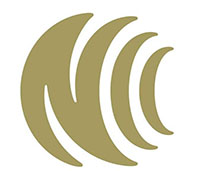
SRRC, State Radio Regulatory Commission of the People's Republic of China, SRMC certification is also known as SRRC certification. Since June 1, 1999, China's Ministry of Information Industry (MII) has made it mandatory for all radio components and products sold and used in China to obtain the Radio Type Approval Certification.
Effective date: Since June 1, 1999
Approval content: To verify the working frequency, frequency band, output power, frequency tolerance, occupied bandwidth, out-of-band emission,spurious emission and other frequency spectrum parameters of the radio transmitting equipment.
Implementation body: license issuing authority, issuing unit, testing organization.
License issuing authority (decisive organization): Ministry of Industry and Information Technology of the People's Republic of China (MIIT for short).
Issuing organization (accepting organisation): SRRC of MIIT. Responsibilities: Responsible for the preparation of the radio frequency spectrum planning; the division, distribution and assignment of radio frequencies; supervising and administering radio stations (stations) according to law; responsible for the coordination and management of satellite orbit position; coordinating and dealing with the issues related to intermilitary radio management; responsible for radio monitoring, detection and investigation of interference, coordinating and dealing with electromagnetic interference, and maintaining the order of air waves; organizing the implementation of radio control according to law; responsible for foreign radio management
Testing organization: Authorized by the SRRC of MIIT, with the qualification of radio transmission characteristic testing. Please visit the following MIIT website for query: http://www.miit.gov.cn/n1146285/n1146352/n3054355/n3057735/n3057744/n3057747/c3538760/content.html
Product scope: all radio components or products sold and used in China (except micropower equipment).
Certification procedure: Certification application -->Acceptance of application-->Product testing -->Data review -->Issuing certificate.
Completion of certification: Obtaining the product type approval certificate means the completion of certification.
Validity of certificate: 5 years (renewable, one certificate is valid for 8 years in total), except frequency band limit time.
Certification type:
New application
Extension
Put an application when the certificate is about to expire or for reporting that the RF module has a certificate
Rename
Change of certificate holder's company name
Extension+rename
Change of certificate holder's company name+ certificate extension
Scope of SRRC Certified Products
Article 44 of the Regulations of the People's Republic of China on the Management of Radio Operation stipulates: "Except for the micro-power short-range radio transmission equipment, the production or import of other radio transmission equipment for sale or use in China shall apply to the State Radio Regulating Committee (SRRC) for type approval."
SRRC Certification Procedure
Slide left and right to see more

OFCA Certification
OFCA certification is a mandatory wireless certification in Hong Kong SAR. Radio frequency and telecommunications products sold in Hong Kong must comply with their requirements for certification application and the certification mark and certification number shall be identified on the products.
OFCA, Office of the Communications Authority (OFCA), established on April 1, 2012, is formerly known as the Office of the Telecommunications Authority (OFTA).
Radio equipment (including radio communication equipment and industrial, scientific and medical equipment that deliberately emit RF energy) must meet the minimum technical requirements specified by the OFCA. Technical requirements for radio equipment commonly used in Hongkong are generally specified in the HKCA specifications to ensure the connection of electrical safety, anti-interference with public networks. In accordance with the HKCA specification, the radio equipment that has been certified and conformed to the requirements may be approved for type verification.
Certification Type
According to the Hongkong Accreditation and Certification Scheme of Telecommunications Equipment, radio equipment is classified as either Voluntary Certification Scheme (VCS) or Compulsory Certification Scheme (CCS).
a. Voluntary Certification Scheme (VCS)
Only applicable to radio equipment exempted from licensing under the Telecommunications Ordinance. Such equipment may be used or sold in Hongkong without type approval. However, it is the responsibility of the manufacturers, suppliers or distributors to ensure that their radio equipment complies with specified technical requirements. Manufacturers, suppliers or distributors may, on a voluntary basis, apply to an authorized body for type verification of radio equipment in accordance with the relevant HKCA specifications.
b. Compulsory Certification Scheme (CCS)
Radio equipment under the Compulsory Certification Scheme (CCS) must be certified through the type approval before it can be used or sold in Hongkong. Such equipment includes high-power radio communications equipment, and its use is generally subject to licensing control.
Certification Procedure
Verification requirement classification;
Certification test agent;
Certificate awarded;
Label arrangement
Label Requirements
Format of Label:
English text in the upper portion in Arial font in black colour
Chinese text in the upper portion in 中 黑 體 in black colour
Border in black colour Background colour in white
Format of Certificate No.:
ZZZZZ : Certification Body code assigned by OFCA
YY : Year of issue
XXXXX : Serial number of certificate issued during that calendar year
OFCA will maintain a certified equipment registry containing the certificate number and equipment identification for public inspection. The brand name and model of labeled equipment should be displayed prominently to facilitate public verification of the equipment.
